Section 1.1 Section 1.2 Section 1.3 - The Student Room
Section 1.1 Section 1.2 Section 1.3 - The Student Room
Section 1.1 Section 1.2 Section 1.3 - The Student Room
Create successful ePaper yourself
Turn your PDF publications into a flip-book with our unique Google optimized e-Paper software.
SECTION 5<br />
<strong>Section</strong> 5.1<br />
1 a Ca 2+ (aq) + 2OH – (aq)<br />
b Mg 2+ (aq) + SO 2– 4<br />
(aq)<br />
c 2Na + (aq) + O 2– (aq)<br />
d K + (aq) + OH – (aq)<br />
e Ag + (aq) + NO – 3<br />
(aq)<br />
f 2Al 3+ (aq) + 3SO 2– 4<br />
(aq)<br />
2 a NaBr<br />
b Mg(OH) 2<br />
c Na 2<br />
S<br />
d BaO<br />
e CaCO 3<br />
f Ca(NO 3<br />
) 2<br />
g K 2<br />
CO 3<br />
3 a Ba 2+ (aq) + SO 2– 4<br />
(aq) Æ BaSO 4<br />
(s)<br />
b Mg 2+ (aq) + 2OH – (aq) Æ Mg(OH) 2<br />
(s)<br />
c Ca 2+ (aq) + CO 2– 3<br />
(aq) Æ CaCO 3<br />
(s)<br />
d Ba 2+ (aq) + CrO 2– 4<br />
(aq) Æ BaCrO 4<br />
(s)<br />
<strong>Section</strong> 5.2<br />
1 <strong>The</strong> small size of the carbon atom makes it possible for<br />
carbon to form double bonds with oxygen to produce<br />
discrete covalent molecules. Silicon, on the other hand,<br />
bonds to 4 oxygen atoms to form single bonds and<br />
hence a covalent network structure. <strong>The</strong> attractive forces<br />
between the molecules of carbon dioxide<br />
(intermolecular forces) are weak so that little energy is<br />
needed to separate the individual molecules. Strong<br />
covalent bonds exist throughout the SiO 2<br />
covalent<br />
network structure so a lot of energy is needed to melt it.<br />
2 a Any attractive forces between the solvent and the<br />
atoms in the covalent network structure are too weak<br />
to overcome the strong covalent bonds holding the<br />
network together.<br />
b At room temperature, the kinetic energy of atoms and<br />
molecules is small but it may be enough to overcome<br />
the weak attractive forces between simple molecules<br />
or isolated atoms.<br />
3 a Diamond structure with silicon and carbon atoms<br />
alternating.<br />
4 2Na + (aq) + SO 2– 4<br />
(aq) + 10H 2<br />
O(l) Æ Na 2<br />
SO 4<br />
.10H 2<br />
O(s)<br />
5 a H + (aq) + OH – (aq) Æ H 2<br />
O(l)<br />
b Zn(s) + 2H + (aq) Æ Zn 2+ (aq) + H 2<br />
(g)<br />
c CuO(s) + 2H + (aq) Æ Cu 2+ (aq) + H 2<br />
O(l)<br />
d CaCO 3<br />
(s) + 2H + (aq) Æ Ca 2+ (aq) + H 2<br />
O(l) + CO 2<br />
(g)<br />
6 a i Cubic<br />
ii Eight<br />
iii Eight<br />
b <strong>The</strong> attractions between the oppositely charged<br />
caesium and chloride ions greatly outweigh the<br />
repulsions between ions with the same charge. <strong>The</strong><br />
net attractive force is very high. <strong>The</strong> solid is hard and<br />
has a high melting point as this strong attraction has to<br />
be overcome to separate the particles.<br />
b <strong>The</strong> silicon and carbon atoms are held together by<br />
strong covalent bonds in an extended network<br />
structure. This makes the substance very hard.<br />
4 a Graphite structure with alternating boron and nitrogen<br />
atoms.<br />
b In graphite, each carbon atom has 4 bonding electrons.<br />
Only 3 are needed to form the layer structure. <strong>The</strong><br />
fourth electron is ‘free’ and causes graphite to be a good<br />
electrical conductor. Both boron and nitrogen have only<br />
3 bonding electrons. All 3 are needed to form the<br />
structure of the layer. <strong>The</strong>re are no electrons available to<br />
become delocalised and conduct electricity.<br />
5 It was assumed that buckminsterfullerene was a covalent<br />
network structure and would be insoluble like graphite<br />
and diamond, but solution in benzene showed it,<br />
surprisingly, to be a molecular form of carbon.<br />
Attractive forces between the solvent molecules and<br />
the carbon atoms are sufficient to overcome the weak<br />
intermolecular forces between the buckminsterfullerene<br />
molecules.<br />
<strong>Section</strong> 5.3<br />
1 a Kr, Xe (higher b.p.)<br />
b C 6<br />
H 14<br />
, C 8<br />
H 18<br />
(higher b.p.)<br />
c CH 4<br />
, CCl 4<br />
(higher b.p.)<br />
d CH and<br />
CH 3<br />
CH 3<br />
CH 3 CH 3 CH 2 CH 2<br />
CH 3<br />
(higher b.p.)<br />
3<br />
pentane<br />
e<br />
CH 3<br />
methylbutane<br />
CH 3 CH CH CH 3<br />
CH 3<br />
and<br />
174<br />
CH 3 CH 2 CH 2 CH 2 CH 2 CH 3 (higher b.p.)<br />
2 In the solid or liquid state, noble gas atoms are held<br />
together by weak instantaneous dipole–induced dipole<br />
forces. It takes very little energy to break these attractions<br />
and this results in very low melting and boiling points.<br />
dimethylpropane


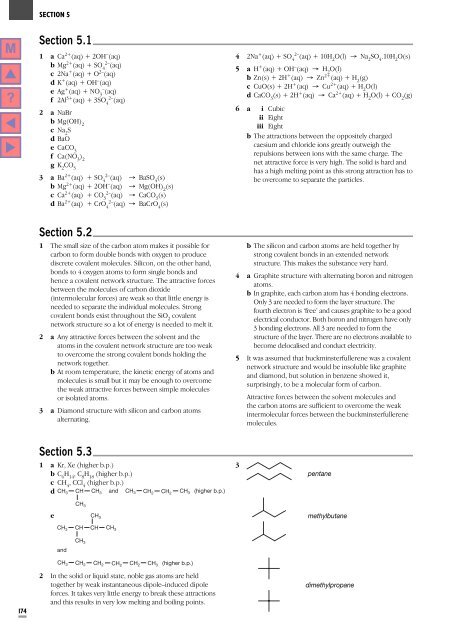
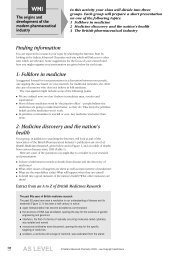
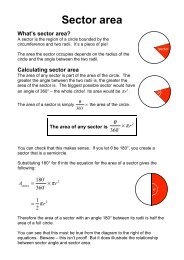
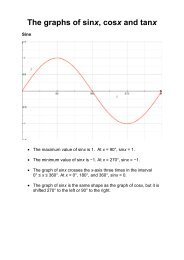
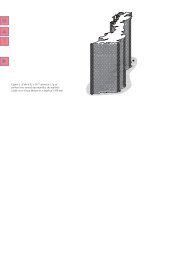

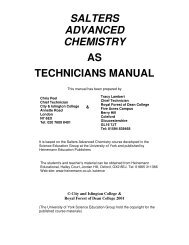


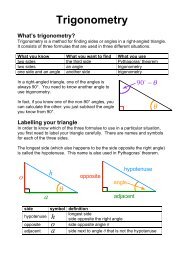
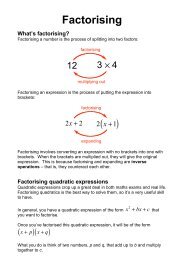
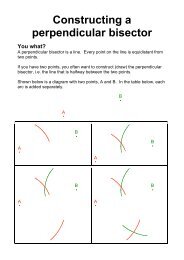


![ISI Web of Knowledge [v.4.10] - All Databases Results - Benjamin-Mills](https://img.yumpu.com/39253071/1/184x260/isi-web-of-knowledge-v410-all-databases-results-benjamin-mills.jpg?quality=85)